 |
lanterns
Cambridge has mostly escaped any major relighting schemes over the last twenty years. With the exception of the
relighting of the ring road, and the removal of the majority of the city's fluorescent stock, the installation has remained
largely unchanged for decades.
This is set to change with a PFI on the horizon. So, until that starts to sweep away some lighting history, here's some
examples of the lanterns, brackets and columns which can still be found on Cambridge's streets.

|
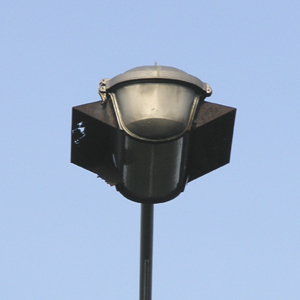
|
REVO Silvergold Aeroscreen
Madingley Road
For a short period, the REVO Silvergold was the council's Group-A low pressure sodium
lantern of choice. Its use seemed to coincide with the last of the council's gas column stock (with one lone installation
of this combination lighting Rustal Road) before it was used with Stewarts And LLoyds columns and
brackets on Barnwell Road, half of Coldham's Lane, Wadloes Road, Perne Road, Mowbray Road and Madlingley Road. After
this, the council switched back to AEI Amber Mk IV lanterns.
The Madingley Road installation is of particular interest as the lanterns were aeroscreened due to the
proximity of the Royal Observatory.
The years have taken their toll and now only one lantern retains its two aeroscreen louvers. Columns have either
been replaced or the louvers have rusted away. (The example pictured shows corrosion to the left hand assembly).
|

|
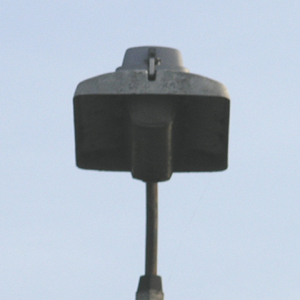
|
AEI Amber Minor Cut-Off
Ditton Walk
I have often wondered if Ditton Walk was using by Cambridge's lighting engineer for trials. The lighting
installed is completely atypical for the city: where the majority of the columns and brackets were metal,
Ditton Walk was partly concrete; where the majority of the Group-B lanterns were fluorescent, Ditton Walk
was low pressure sodium.
It's the only street in Cambridge where AEI Ambers (the 45 - 60W version) and
Amber Minors can be found.
This Amber Minor is of particular interest. It's a first generation model with plastic endpieces
over the end of the bowl (now extremely rare) and appears to have the optional cut-off shield fitted (again,
extremely rare). Whilst
Ditton Walk is near Cambridge Airport, the rest of the lighting in its immediate area is not cut-off, so
the modification to its optics are a mystery.
|

|
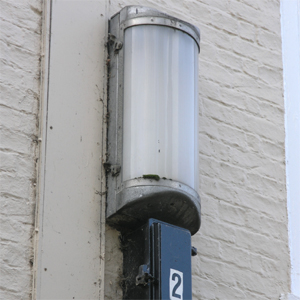
|
"Fluorescent Wall Lantern"
Botolph Lane
These distinctive wall mounted fluorescent lanterns can be found in several of the city's
streets (Botolph Lane, the southern half of Free School Lane and the end of Litte St. Mary's
Lane).
As all these streets are extremely narrow, it's assumed the council's Group-B lantern of choice
(the REVO Junior Sol-Etern) would've been unsuitable (owing to the lantern extending
over the roadway and becoming an obstruction.
In these cases, these wall hugging 2 x 40W MCF lanterns were used instead. They are yet to
be identified but appear to be smaller versions of the REVO Haddington
lantern.
|

|
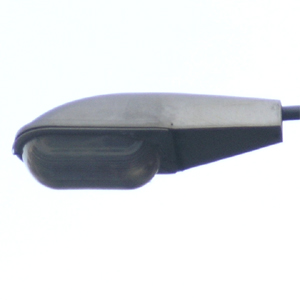
|
REVO Horizon Major
Downing Street
For a brief period, probably in the mid 1960s, Cambridge flirted with mercury lanterns. The first
fluorescent lanterns to disappear (namely the Richardson Candles around the marketplace and
the Sol-Eterns on Regent Street) were replaced by Atlas Alpha 3s.
In other areas, such as Downing Street and King Street, the lanterns of choice were REVO
Horizons and Horizon Majors. The lighting of Downing Street was particularly interesting
as the gearless Horizons gave way to geared Horizon Majors mid-street along with an
increase in mounting height.
Half the Downing Street installation remains with the remaining lanterns gradually being converted to high
pressure sodium. The Horizon Majors also have two different types of prismatic glass refractors
(one with a "V" shaped prisms, the other with parallel prisms).
|

|
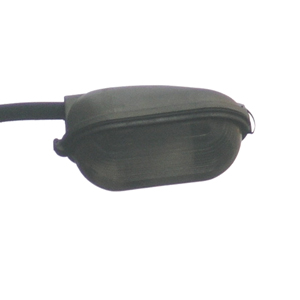
|
REVO Horizon
Downing Street
I believe the gearless REVO Horizon was only installed along Downing Street. Most were
replaced when the lighting along the western end of the street was upgraded; only three are now extant.
|

|
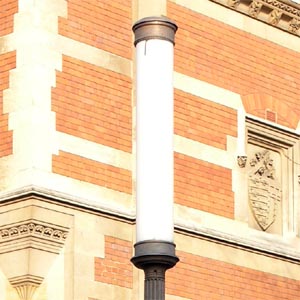
|
REVO Richardson Candle: Post Top
Trumpington Street
The whole of the historic city centre was once lit with these bespoke lanterns which were unique to Cambridge. (For more information
about them, check out their own page).
The numbers of the column mounted versions have dwindled in recent years and the council is beginning to think about their
replacement (a PFI is planned). Until then, Cambridge's city centre remains one of the few locations in the UK still lit by Group-A
fluorescent street lighting.
|
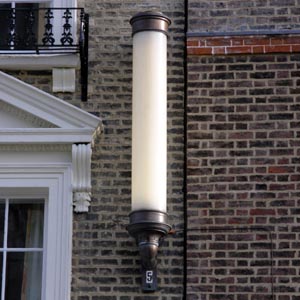
|
REVO Richardson Candle: Wall Mount
St John's Street
As many of the streets through the city are extremely narrow, some of the Richardson Candles were mounted to
the sides of the buildings. This required a custom bracket to mount the lantern on, and a slightly modified end cap with its
own mounting bracket.
Unlike the column mounted Candles which took four fluorescent tubes, the wall mounted versions only took three.
|
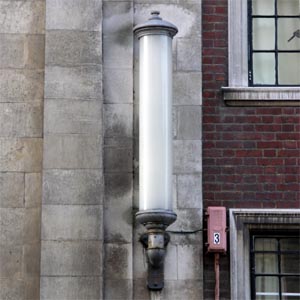
|
REVO Festival: Wall Mount
Trumpington Street
One of the wall mounted lanterns is an imposter. A REVO Festival, the lantern on which the Richardson Candle
was based, can be found on Trumpington Street. It isn't as linear as the Candle and has been painted silver instead
of bronze.
|
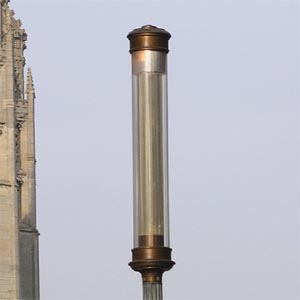
|
REVO Richardson Candle: Modified Prototype
Trumpington Street
In 1999, Speirs And Major were contracted to write a document on the relighting of the city centre. They were
generally sympathetic to the Candles suggesting their resiting and/or modification rather than their total
removal. The council took the punge and D W Winsdor altered a Candle's optics to
Speir And Major's specification by replacing the
fluorescent lamps with two metal halide bulbs.
Unfortunately the results weren't satisfactory and the idea wasn't pursued.
|

|
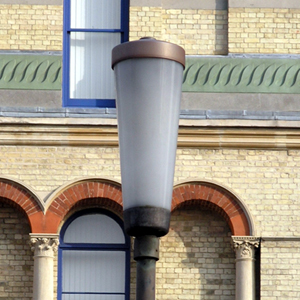
|
GEC Z8451
Trumpington Street
When a Richardson Candle was knocked over in the 1970s, the council tried to fill the gap with
similar vertical fluorescent lanterns. In this case, what appears to be a GEC
Z8451 lantern has been erected in its place. It now burns a single SON bulb.
This is the last lantern of its type in Cambridge. A similar one stood outside the Mitre, but was removed
when the lighting in Bridge Street was upgraded.
|

|
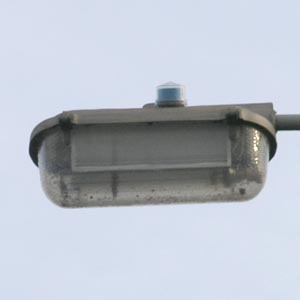
|
REVO C13723/S
Madingley Road
Given the small number of REVO Silvergold installations, the city's lighting engineer
was remarkably consistent with the casual replacements. When the original lanterns needed replacement, he used the
REVO's next sodium lantern, the C13720 range.
A small number of these replacements can be found in the Madingley Road and Brooks Road installations.
|
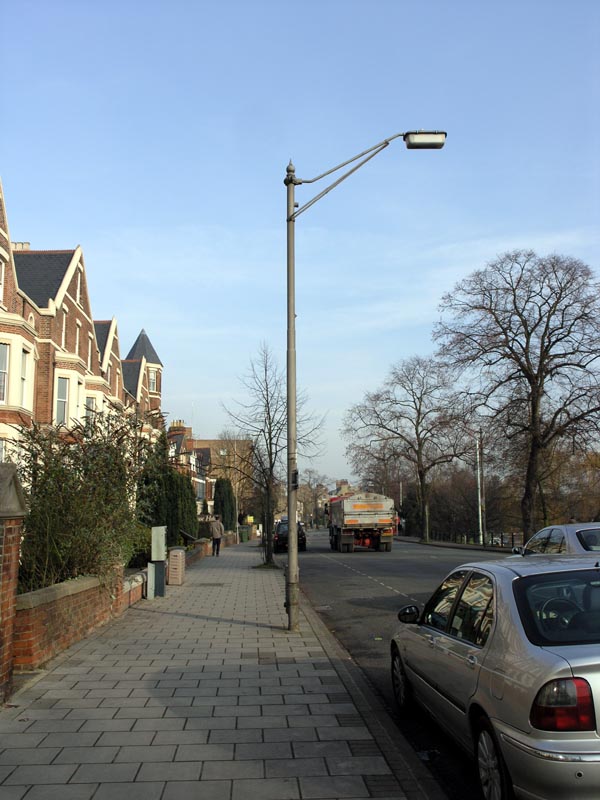

|
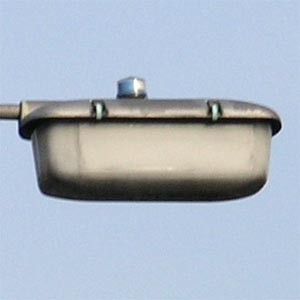
|
AEI Amber MK IV
Chesterton Road
I suspect the reason behind Cambridge's city lighting engineer purchasing hundreds of gas lighting columns
to relight the city's main traffic routes are now lost to time. The battle between gas and electricity was effectively
lost in 1953 when gas prices went through the roof and gas street lighting became uneconomic; so why purchase hundreds
in 1957 for the electric scheme?
I suspect they were cheap.
This cheap option came at a price: upwardly sloping brackets were now required to position the lantern
at the correct eight meter mounting height (supplied by REVO but designed to mount lanterns
on trolley bus brackets) and there was no electrical compartment in the column so a large cast-iron gear-box was
bolted to the side of the column (also supplied by REVO).
Of course, the city's other lighting supplier had to be considered so AEI provided all the
gear to put in REVO's gear-box and also supplied the lanterns: the newly introduced Amber MK IV
(which now used two toggle clips on the side of the lantern).
Two styles of gas column were used: those with finials and those without (both are pictured). A gas nipple
emerged half way up the column (unused but can be seen in the top picture) and another short extrusion was designed
for the gas lantern's bracket - again unused.
About half the original installation still survives, many still with original gear and lanterns. All will be swept
away by the forthcoming PFI.
|

|
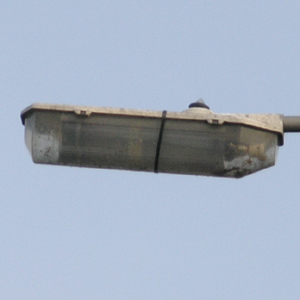
|
ELECO/Davis GR100
Castle Hill
Cambridge's lighting engineer stuck with Atlas as the Amber MK IV was again
redesigned and rebranded as the Alpha Nine. Many can still be found around the city, all
casual replacements.
By the mid 1980s, the lighting supplier switched to ELECO and a small stock of the newly styled
GR100s were purchased to replace ageing/broken 90W SOX lanterns. However, the lantern was poorly designed,
and many are now held together with black insulating tape.
The association with ELECO did not last long and the lighting engineer decided to start using
Philips lanterns, which continues to the present day.
|
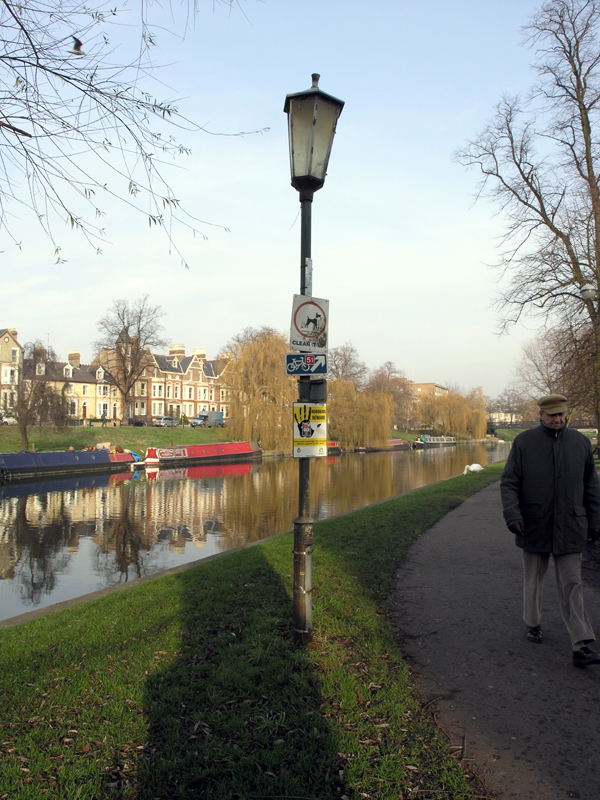

|
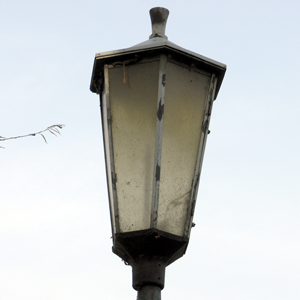
|
REVO Eastbourne
Near Park Parade (next to the Cam)
This lantern appears is amazingly haphazard; it's awkwardly sited next to the Cam, mounted on an
amazingly spindley column and has aquired a slight lean over the years.
It's the only one of its type in Cambridge and its survival continues to interest me. The council have not forgotten
it though, as it's still fully functional (and burns a SON lamp).
It appears to be a REVO Eastbourne (although a fully positive identification will have
to wait until I've done more research - many manufacturers made this style of lantern).
Perhaps the council were
interested in lighting the path next to the Cam by more traditional looking lantern, and this one Eastbourne was put in
as a trial? But I suspect the facts behind this lantern will never be known.
|

|
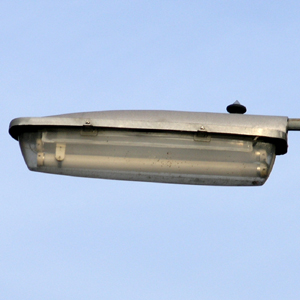
|
GEC Z8260
Thompsons Lane
The area around Thompsons Lane and Park Parade was one of the last area of Cambridge's street lighting to be converted
from fluorescent to low pressure sodium. In fact, the replacement took so long, that many lanterns were replaced by
high pressure sodium. But it's almost as if the council ran out of steam, as several fluorescents still remain, seemingly
forgotten by the conversion.
This GEC Z8260 is one of them.
The Z8260 became the city's Group-B fluorescent lantern of choice after they stopped using
REVO Junior Sol-eterns (although I suspect REVO - or Relite -
had stopped making them at that point). Therefore the Z8260 was used for casual replacements and any
new road lighting schemes in the 1970s.
"The Park Street area, as it is known locally, was included in the city
centre "white light" area when the rest of the city was converted to low
pressure sodium lighting in the 1980s. A few SOX lights have crept into
the area by mistake, usually after replacements. Where I have spotted
them I have got them replaced, usually, as you observed, by SON lamps
though I think there is at least one metal halide light. I recently
became aware of a couple of cases I had missed but the PFI should sort
them out shortly." - Colin Rosenstiel
|

|
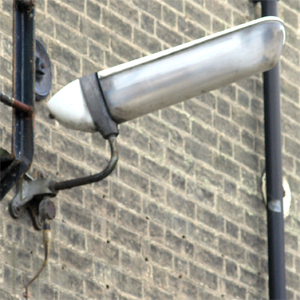
|
REVO Junior Sol-etern
Thompsons Lane
The REVO Junior Sol-etern was the lantern of choice for all Cambridge's side streets,
mounted on AEI Leader columns. Hundreds, if not, thousands were installed throughout
the city.
During the mounting fuel crisis of the 1970s, they were considered inefficient, and their wholesale replacement
by GEC Z9538 low pressure sodium lanterns began in the 1980s.
Only an handful of Junior Sol-eterns now remain. Interestingly all the reminants are wall mounted
examples; suggesting a possible problem with wayleaves over their replacement?
These final survivors will probably be swept away by the forthcoming PFI.
|
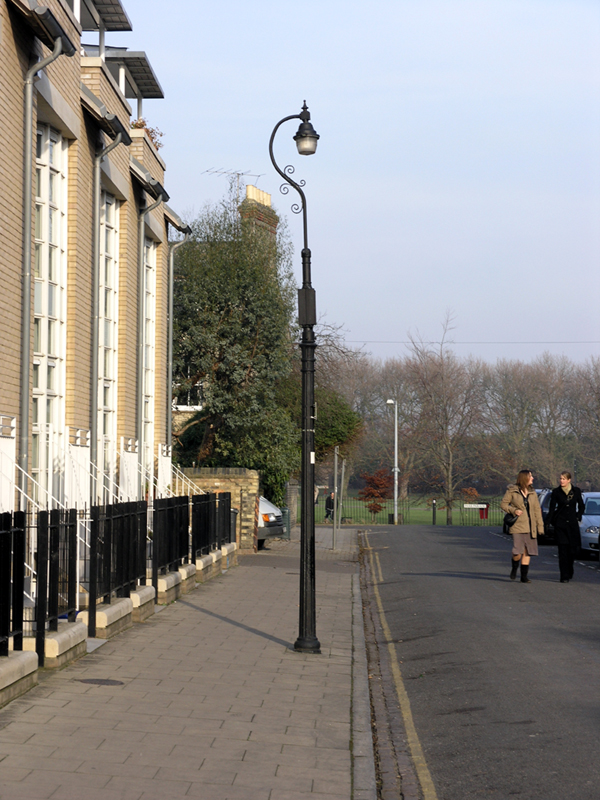

|
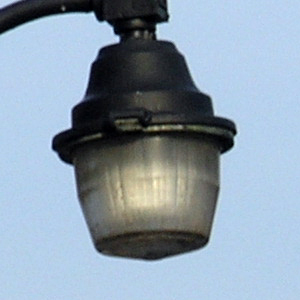
|
BTH Urban Enclosed
Portugal Place
These two lanterns along the eastern end of Portugal Place are survivors from the conversion of the
city's street lighting from gas to electricity.
Mounted on an existing gas column is this old BTH swan neck with BTH
Urban Enclosed lantern. Most of Cambridge's gas lanterns were converted this way; and the
tungsten Urban Encloseds were changed for GEC Z9533 lanterns when
the city was converted to low pressure sodium.
The Portugal Place relics are the last surviving examples; two other Urban Encloseds hang on in
other parts of the city, but Portugal Place is the only street to still be lit by them.
|

|
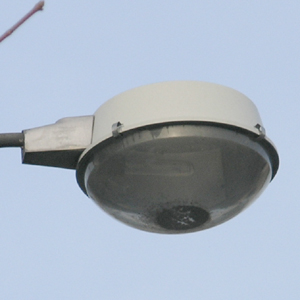
|
Simplex Jupiter
Manor Street
The only Simplex Jupiters in Cambridge can be found on Manor Street where
three were installed on the western side of the road. Like the neighbouring King Street (see below)
this appears to have been a council experiment, comparing Simplex's lantern with
ELECO's.
I suspect these columns and lanterns were installed in the 1970s. They have since been converted to
SON.
"The reason why Manor Street's lights are unique is because the street was
newly constructed in the mid-1970s so its lights date from then and not
later replacement programs in King Street" - Colin Rosenstiel
|

|
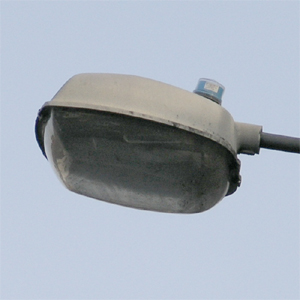
|
Philips MA 3
King Street
Another lone 1970s scheme appears along King Street. These lanterns are Philips
MA 3s; the design was based on a popular ELECO lantern.
These lanterns would've originally been fitted with mercury lamps but have since been converted to
SON.
The lantern at the north eastern end of the road has been replaced by an equally rare (for Cambridge)
Thorn Alpha Three.
|

|
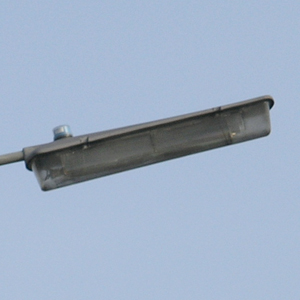
|
AEI Amberline / Thorn Alpha Five
Newmarket Road
Cambridge had few dual-carriageway streets, but in the 1960s, Newmarket Road was upgraded and widened
(probably to act as an arterial route to the newly constructed Elizabeth Road bridge).
All the existing lighting stock was removed (the ever faithful 90W AEI Ambers
on gas lamp columns) and replaced with higher powered 135W lanterns.
The western end of the newly upgraded Newmarket Road was lit by a handful of
AEI Amberline / Thorn Alpha 5 lanterns. It
isn't known if the lanterns were fitted with SLI/H or SOX tubes originally.
They're now burning SOX and only about four remain. They were not Cambridge's original choice
for 135W SOX lanterns - that was the modified REVO Hyperion.
"The dualling of Newmarket Road took place in the mid-1970s, after
Elizabeth Way opened in 1971. The partial dualling of East Road mostly
took place in the 1960s, however." - Colin Rosenstiel
|

|
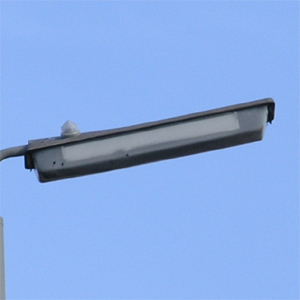
|
Modified REVO Hyperion
Newmarket Road
Cambridge's 135W SOX lantern of choice was the modified REVO Hyperion
and a short strech of the western end of Newmarket Road is still lit by this lantern.
The original REVO Hyperion (designed for the new SLI/H sodium lamp)
had a flat based bowl. After the Code Of Practice for street lighting was updated in the mid 1960s,
it was discovered the lantern emitted too much light directly beneath it. Therefore the bowl was
modified with a 'V' shaped base - thus casting more light either side.
The lanterns fitted in Cambridge have these modified bowls.
|

|
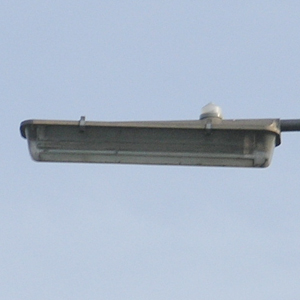
|
Relite Hyperion 135
Newmarket Road
The Hyperion was redesigned again in the early 1970s after the lighting division of
REVO was sold and rebranded as Relite.
A very rare lantern in Cambridge, this short stretch of Hyperions lights the short segment
of Newmarket Road by the football ground.
|

|
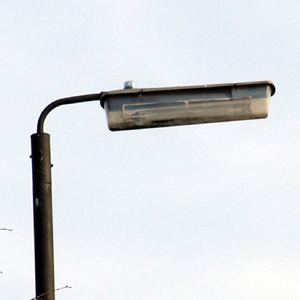
|
AEI Amberline / Thorn Alpha Five
Newmarket Road
The western end of Newmarket Road is also lit by Thorn Alpha 5s. These models have
deeper bowls than the earlier slimmer Amberline versions as they were designed for SOX lamps.
Never popular in Cambridge, these lanterns were only installed on dual carriageways of Newmarket Road.
|

|
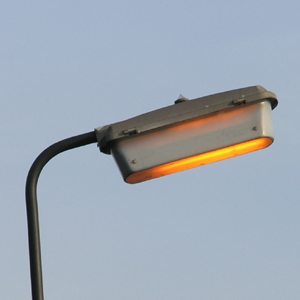
|
GEC Z9464C
Newmarket Road
As Newmarket Road continues past Cambridge Airport the street lighting switches from lanterns
with a semi-cut-off distribution to cut-off distribution (as stipulated in various lighting
specifications and aviation rulings).
The lamp sizes also decrease from the 135W LPS lamps used by the Thorn Alpha 5s down to 90W lamps
used in these GEC Z9464C lanterns. The lantern has opaque side panels (unlike the more
popular Z9464). This feature, along with internal reflectors, gives the desired
cut-off distribution.
This type of lantern was only ever installed on this stretch of road. A later casual replacement of a
Thorn Alpha 9 required masking tape to be stuck inside the lantern’s bowl to modify
the optics to conform to airport regulations. (A similar ad-hoc modification was also made to a
Thorn Alpha 9 over the railway bridge on Long Road – this lantern has since been replaced
and is now in the collection).
|

|
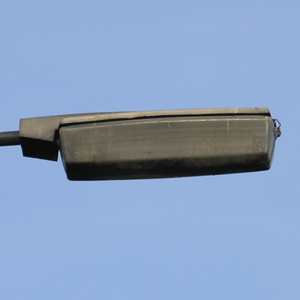
|
Relite Lucidor A
Coldhams Common
Most of the traffic routes in Cambridge were lit with BTH/AEI Amber lanterns. However, it appears a few routes were
either upgraded or lit after the main work was done, and in this small number of cases, the lighting engineer used
90W LPS lanterns from REVO/Relite instead.
REVO Lucidor As (with side-entry shoes) were used to light the footpath winding over Coldhams Common.
A similar model (this time the top-entry) was used for Bateman Street. The smaller model was never used to light any Group 'B'
roads (as Cambridge used fluorescent) but a small number of the gear-in-head Lucidor B were used for the roads of
Addenbrookes Hospital.
|
|



